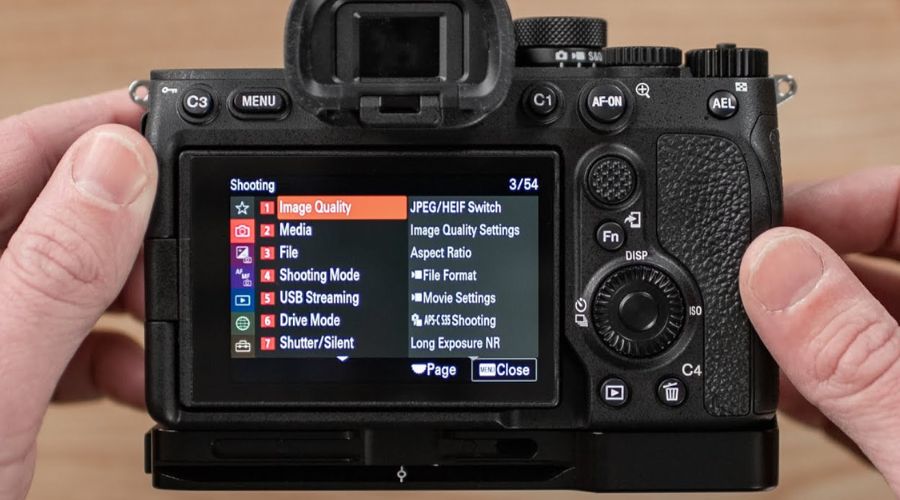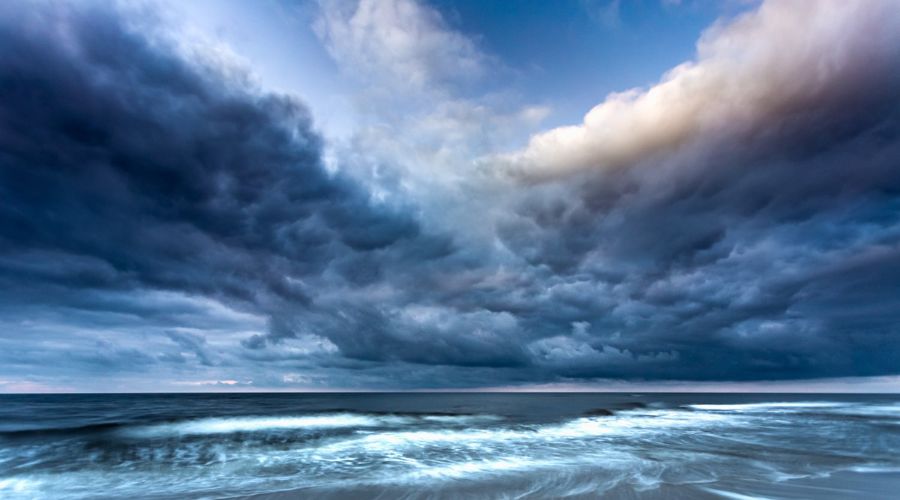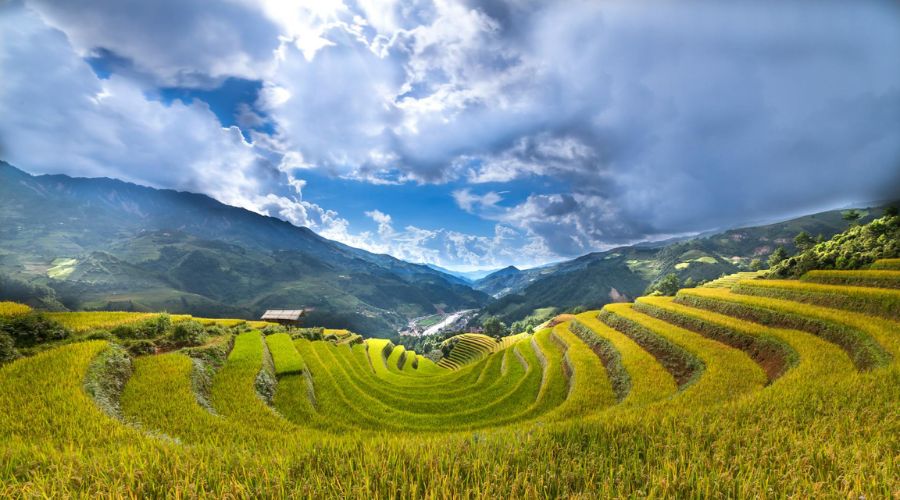Essential Equipment for Cloudy Day Photography
So, you’ve stepped out to snap some photos and you’re greeted by a sky full of cotton-candy clouds. Not to worry, cloudy day photography can yield some real stunners.
First, let’s dig into the gear you’ll want to have on hand. Think of it as your trusty utility belt for tackling the gray skies.
Best Camera Settings for Overcast Conditions
Got your camera? Sweet.
Now, let’s talk about settings.
On overcast days, light is your finicky friend. You’ll want to lower that ISO to get the most from the diffused sunlight. Keep it cozy around 100-400 to avoid noise.
Aperture? Wide open to swallow as much light as possible. And shutter speed – not too fast, not too slow, just right to prevent any unwanted motion blur.
Like Goldilocks and her porridge, find the balance that’s just right for your scene.

Utilizing Tripods for Stability and Sharpness
When the wind’s a-blowing and you’re trying to capture that perfect shot, a tripod is like an old friend that’s got your back.
Set it up and say goodbye to shaky hands and blurry photos.
A good tripod means you can play with slower shutter speeds and still get crisp images. It’s like magic, but you know, the practical kind.
Advantages of Using a Lens Hood
Think of a lens hood as the brim of a baseball cap for your camera. It keeps pesky raindrops from smudging your lens and helps cut down on that glare from the sneaky side light.
It’s a small touch that can make a big difference. Plus, it makes your camera look hecka professional like it’s about to hit the photographer’s home run.
Protecting Your Gear from the Elements
Clouds above might decide to throw a little water party. Keep your gear dry with some weather-sealed bags or cases.
A simple rain cover can save the day – and your camera. It’s a bit like a raincoat for your tech; it’s way better to have it and not need it than to need it and not have it.
Tips for Mastering Exposure on Cloudy Days
Cloudy day photography offers a banquet of soft, diffused light – the perfect opportunity for you to create some wonderfully moody and atmospheric shots.
Now, let’s dish out some tips to get your exposure spot on, so you can capture stunning photos even when the sun plays hide and seek.

Understanding the Exposure Triangle
Like a slice of pie needs the perfect balance of crust, filling, and topping, your photo needs the right mix of ISO, shutter speed, and aperture.
Crank up the ISO too high, and you invite a noisy gatecrasher to your photo party. Slow down the shutter speed too much, and you’ll capture more blur than a Bigfoot sighting.
The aperture is like the hole in a donut, changing in size to control the light – make it wide, and your photo depth becomes as shallow as a kiddie pool.
Manual vs. Automatic Exposure Modes
Switching to manual mode is like taking the training wheels off your bike – suddenly, you’ve got the freedom to roam, but there’s also the chance of a tumble.
Your camera is the boss on automatic, deciding exposure with the precision of a Swiss watch.
But by taking control with manual mode, you become the maestro, tuning the orchestra of ISO, shutter speed, and aperture to compose your symphony.
Metering Techniques for Balanced Shots
When the sky is overcast, the light is as even as a freshly Zamboni’d ice rink, but your camera meter might get as confused as a chameleon in a bag of Skittles.
Use spot metering to focus on the protagonist of your image, whether it’s a gloomy castle or a reflective puddle.
Matrix metering reads the whole scene, trying to find a middle ground – kind of like a referee in a food fight.
Composition Techniques for Cloudy Skies
Snapping photos on a cloudy day can lead to some seriously mood-boosting shots if you play your cards right.
As you peer through your viewfinder, don’t shy away from those overcast skies—they’re your ticket to some stunning photography.
Let’s talk about composition techniques that’ll turn that blanket of gray into pure visual gold.

Incorporating the Sky as a Dramatic Backdrop
Clouds are nature’s mood ring, adding a splash of drama to any scene.
So, let those clouds take center stage and use them to paint a picture that’s equal parts brooding and breathtaking.
Think of it as Mother Nature laying out a red carpet in the sky, just for your photoshoot.
Capture those fluffy, dark, or streaky clouds to give your image an edge that clear skies just can’t match.
Using Leading Lines and the Rule of Thirds
Lead the eye like you’re leading a dance—gracefully and with a pinch of flair. Use pathways, fences, or even a row of trees to draw viewers into your picture.
And remember the rule of thirds: divide your frame into a tic-tac-toe board and place interesting elements at the intersections.
This age-old trick is like the secret sauce to a finger-lickin’ good photo.
Creating Depth and Scale with Foreground Interest
Give your shots some oomph by playing with depth.
Sprinkle a bit of foreground interest into the mix, like a rock or a colorful leaf, and voilà—you’ve got yourself a photo with more layers than a winter outfit in the Windy City.
This trick adds a sense of scale, making your viewers feel like they’re right there with you, soaking in the scenery.
Utilizing Natural Diffused Light
You’re in luck on a cloudy day; the sun’s harsh shadows take a break.
Again, think of the sky as a giant softbox, scattering light evenly and wrapping your subject in a flattering glow.
Soft Light: A Portrait Photographer’s Dream
When the clouds roll in, it’s showtime for portrait photography.
The gentle light smooths out skin imperfections and softens features. It’s like nature’s own airbrush tool, giving your subjects a magazine-cover look without the fuss of artificial lighting.
Cheeky, right?
Highlighting Texture and Detail
Talk about a silver lining!
Cloud cover can actually enhance textures and details in your shots.
Whether it’s the rugged bark of a tree or the intricate weave of a knitted sweater, the subdued light lets you capture the nitty-gritty without the glare.
Managing White Balance to Avoid Dull Colors
Cloudy days can cast a cool blue tone, threatening to wash out your scene’s vibrant colors.
Tweak your white balance setting to ‘cloudy’ and watch as the warmth seeps back into your images, giving life to what could have been a flat photo.
Embracing the Mood of Cloudy Weather
When the sky is a blanket of gray, some folks think it’s time to pack up the camera.
But not you, oh no. You know cloudy day photography tips can lead to stunning photos.
Let’s dive into how a bit of gloom can add some serious mood to your shots.

Capturing Emotional Impact and Atmosphere
Cloud cover has a knack for turning ordinary scenes into dramatic landscapes.
The diffused light is easy on the eyes, and there’s a softness to your shots that bright sunshine just can’t touch.
In this overcast light, colors become more saturated, making for photos that pop with less effort.
Ever notice how green grass seems greener, or how that red barn stands out like it’s part of a painting?
That’s your cloudy day magic at work.
So, don’t shy away from color—use it to your advantage to create photos with emotional impact.
Black and White Photography in Overcast Conditions
Okay, here’s a secret: overcast skies and black and white photography go together like peanut butter and jelly.
You’ve got yourself a scene that’s begging for a noir twist without the harsh shadows.
Emphasize textures, patterns, and shapes.
Suddenly, that old gnarled tree is telling a story, and the couple huddled under an umbrella become characters in a timeless tale.
Snap away and watch the every day become extraordinary.
Remember, every cloud has a silver lining—especially when it comes to your photography.
So grab that camera and let the overcast skies be your canvas.
Post-Processing Tips for Cloudy Day Images
You’ve snapped some photos on a cloudy day, and now it’s time to spruce them up.
Bring out those grays and add a sprinkle of pizzazz with a few post-processing tricks.
Clouds are like nature’s softbox; they diffuse light evenly but can sometimes leave your photos looking flat.
Here’s how to give them a little extra “oomph.”
Enhancing Mood with Color Grading
First off, let’s chat about color grading. Color sets the tone, quite literally. On a cloudy day, your pictures can capture a smorgasbord of cool hues.
Ever heard the saying, “Every cloud has a silver lining”?
Well, in post-processing, that’s your cue to play around with the blues and silvers to enhance that moody atmosphere.
Slide into your photo editor’s color grading tool, but don’t go overboard like a kid in a candy store. A gentle nudge towards colder tones can turn ‘meh’ into ‘magic.’
Balancing Contrast and Clarity
Now, onto contrast and clarity.
Think of clarity as the secret sauce to your burger – it’s essential, but too much and it’s a sloppy mess.
Cloudy days can wash out the natural contrasts in your scene. Up the contrast slider bit by bit until that image pops like popcorn on movie night. Add a pinch of clarity to make it as crisp as autumn leaves, but keep it subtle.
Remember, less can be more, just like salt in your grandma’s secret recipe.
Sharpening Techniques for Crisp Images
And let’s not forget sharpening. You want your photo sharp, like the wit of a stand-up comedian.
Sharpening is like a straight-A student – it makes everything stand out. Go easy on the sharpening slider, or your photo will look more textured than a teenager’s acne.
Just a tad will do, enough to make each detail say, ‘Hey, look at me!’ but not so much that it screams at the top of its lungs.
Imagine a photo that’s sharper than a bee sting, with contrast like sunshine and shadow. That’s what you’re shooting for.
Slide those adjustments around like a dance, and watch your cloudy day photos transform from sleepy to sensational.
So, put on your editing cap and turn those gray skies into a photographic work of art. Remember, in photography, it’s not just about the perfect shot, it’s also about the perfect touch-up.
Wrap It Up with a Rainbow After the Rain
So, you’ve got the scoop on cloudy-day photography tips for stunning photos. Put your newfound skills to the test!
Remember, a grey sky is a clean slate for creativity. You’re the artist, and the clouds are your canvas.
Could your next snapshot be the talk of the town? Possibly! Get out there and click away, friends.
Don’t let a drizzle put a damper on your photo op. Snap a moment under the moody canopy, and let your shots sing with emotion.
You’ve got this photography game on lock, even when the sun plays hide and seek. Embrace the gloom, harness the soft light, and keep those shots crisp!
Keep it simple, keep it fun, and let those clouds roll in. With your camera in hand, there’s no telling what kind of masterpiece you’ll craft.
It’s time to show the world that a little cloud cover can’t stifle your shutterbug spirit.
Frequently asked questions
Why is cloudy weather good for photography?
You know how sometimes clouds cover the sun and your picnic plans seem washed up? Well, don’t toss your camera aside! Cloudy skies act like nature’s own photo filter. They soften the sunlight, meaning no harsh shadows on your friend’s face in that epic mid-laugh photo!
Can I capture colorful photos even when it’s cloudy?
You bet! While colors might seem muted, those clouds are your secret weapon. They spread the light evenly and let the true colors of your shots shine without blinding highlights. Just like a mac and cheese recipe, it’s all about finding that perfect blend.
Should I change my camera settings on a cloudy day?
Give those settings a little tweak! Up the ante on your ISO a notch, but keep an eye out for noise. Keep your aperture wide to let in the soft light. Adjust the white balance to “cloudy” and watch your photos warm up faster than hot cocoa on a chilly day.
What’s the best way to capture landscapes on a cloudy day?
Channel your inner explorer and grab those dramatic cloud formations as your backdrop. The even light is perfect for snapping every little detail of nature’s canvas without any part playing hide and seek with the light.
Any tips for adding drama to my cloudy day photos?
Up for some drama? Play with the contrasts! Those grey skies can turn out great when you contrast them with a pop of color—a red umbrella, a yellow raincoat, or even your blue mood. And snap! You’ve got a photo that’s singing with moodiness.
How can I make sure my photos aren’t too dark?
Dark photos are like that one friend who’s always a bit gloomy—you gotta brighten them up! Increase your exposure to let more light into your camera. Just don’t go full disco ball; you want bright, not blinding.
What if my photos come out grainy?
Grainy photos are like sand in your sandwich, not fun. If you pushed your ISO too high, that’s the culprit. Lower it down, or use a tripod to steady your camera at a slower shutter speed. You’ll snag crisp shots, no crunch added.
Is post-processing important for cloudy-day photography?
Don’t shy away from a little after-party for your photos. A touch of editing can add oomph to that cloudy day shot. Boost some shadows, tickle the highlights a bit, and voilà—you’ve got a masterpiece that’ll make your buddies go “Whoa!”
Do I need special gear for shooting in cloudy weather?
Nah, no need for a full gear overhaul. But clutching a tripod never hurts—it’s like having a trusty sidekick holding your camera steady when the light gets low. And a lens hood? That’s just the cherry on top for keeping raindrops and lens flares at bay.
How do I get creative with my subjects on a cloudy day?
Get wild with your imagination! Make those gloomy clouds a stage for a romantic dance shot, or capture the reflection of a street in a puddle for a mind-bending twist. Cloudy days can turn your world into a wonderland for the nifty sharpshooter in you.

